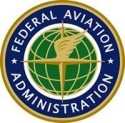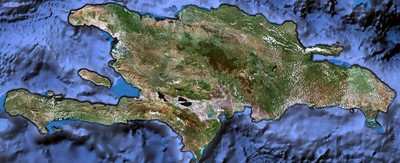Fri, Jan 22, 2010
Additional Assistance Includes Exemptions To Expand The Pool Of
Relief Aircraft Available
 At the request of the Haitian
government, the FAA dispatched a portable, temporary control tower
to Haiti Thursday to help assist with aircraft operations at
Port-au-Prince International Airport. The tower is being
transported aboard a large, chartered cargo aircraft and FAA
technicians will install and prepare it for service which will take
about 48 hours once it arrives in Port-au-Prince.
At the request of the Haitian
government, the FAA dispatched a portable, temporary control tower
to Haiti Thursday to help assist with aircraft operations at
Port-au-Prince International Airport. The tower is being
transported aboard a large, chartered cargo aircraft and FAA
technicians will install and prepare it for service which will take
about 48 hours once it arrives in Port-au-Prince.
"This tower is a visible representation of the Department's
contribution to our government's swift and considerable efforts to
help Haiti deal with this terrible tragedy," said DOT Secretary Ray
LaHood. "We had great support from the military in arranging
for the transport of this critical equipment."
"We are all grateful for the incredible effort put in by FAA
employees who have worked around the clock in Haiti and the
Dominican Republic to help relief supplies and emergency responders
arrive quickly and efficiently," said FAA Administrator Randy
Babbitt.
The portable tower is 44 feet long, 13 feet high and eight feet
wide, and weighs about 25,000 pounds. It comes with two
diesel-powered generators and supporting fuel tanks, plus tools and
other support equipment for installation and maintenance. The FAA
uses this tower and others like it to support airports where
existing towers are out of service after a disaster, like a major
hurricane.
Controllers providing terminal air traffic control services have
worked outside at a folding table, using military radios to handle
about 160 flights a day. The airport's control tower was
rendered unusable by the devastating earthquake on January
12. Tower controllers provide service to arriving and
departing flights in the immediate area of the airport and serve as
ground controllers for movements on the airport surface.

Besides air traffic employees, the FAA has an airports division
team on the ground to inspect and evaluate the physical condition
of the runway as it handles a high volume of heavy military
transport and cargo aircraft. Immediately following the earthquake,
the Department granted two exemptions from current aviation
restrictions, expanding the pool of available aircraft by making
them easier to charter. The first exemption helps streamline the
ability of the U.S. Government to procure charter air services on
short notice. The second granted authority to a class
of carriers that operate large aircraft in private carriage,
allowing them to evacuate persons from and bring personnel and
supplies to the disaster area. Without this exemption, such
conduct could violate the Department's economic licensing
requirement for airlines.
More News
Ultrahigh Frequency (UHF) The frequency band between 300 and 3,000 MHz. The bank of radio frequencies used for military air/ground voice communications. In some instances this may >[...]
During The 7 Second Descent, There Was Another TAWS Alert At Which Time The Engine Remained At Full Power On October 24, 2025 at 2115 mountain daylight time, a Cirrus SR22T, N740TS>[...]
From 2009 (YouTube Edition): Educational Organization Aims to Inspire by Sharing Tuskegee Story Founding leader Don Hinz summarized the Red Tail Project’s mission in simple, >[...]
“This feels like an important step since space travel for people with disabilities is still in its very early days... I’m so thankful and hope it inspires a change in m>[...]
Also: New Katanas, Kern County FD Training, IndiGo’s Botched Roster, MGen. Leavitt Named ERAU Dean The Australian Transportation Safety Bureau (ATSB) has wrapped up its inves>[...]
 ANN's Daily Aero-Term (12.19.25): Ultrahigh Frequency (UHF)
ANN's Daily Aero-Term (12.19.25): Ultrahigh Frequency (UHF) NTSB Prelim: Cirrus Design Corp SR22T
NTSB Prelim: Cirrus Design Corp SR22T Classic Aero-TV: The Red Tail Project--Carrying the Torch of the Tuskegee Airmen
Classic Aero-TV: The Red Tail Project--Carrying the Torch of the Tuskegee Airmen Aero-News: Quote of the Day (12.19.25)
Aero-News: Quote of the Day (12.19.25) Airborne 12.17.25: Skydiver Hooks Tail, Cooper Rotax Mount, NTSB v NDAA
Airborne 12.17.25: Skydiver Hooks Tail, Cooper Rotax Mount, NTSB v NDAA




